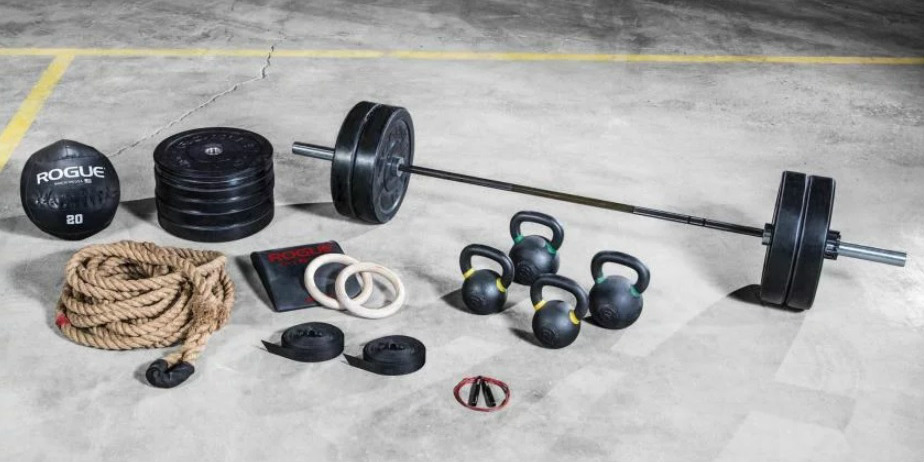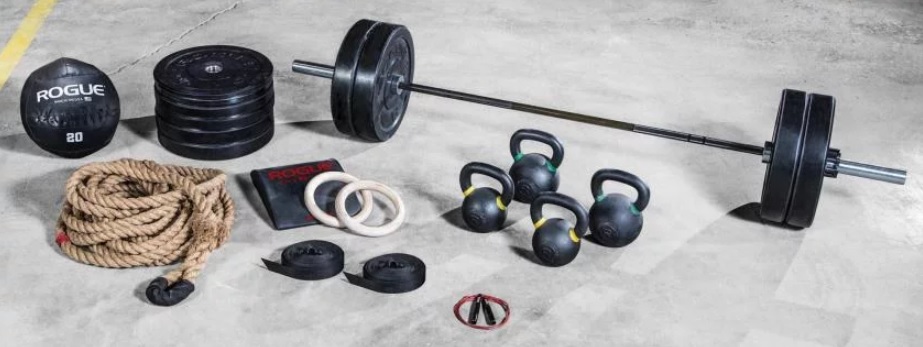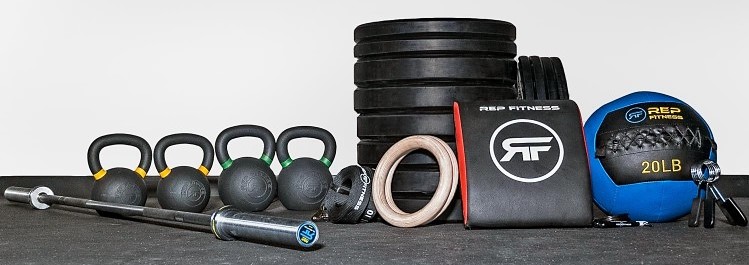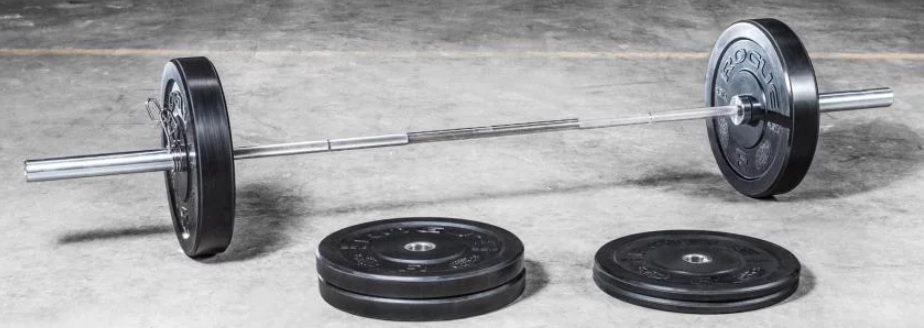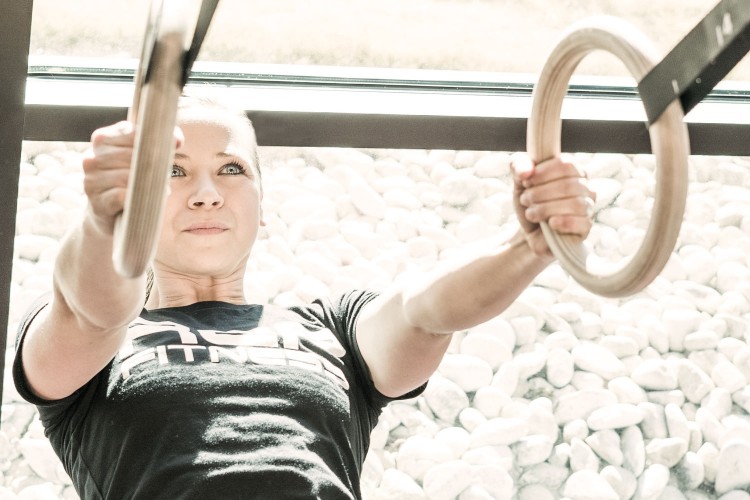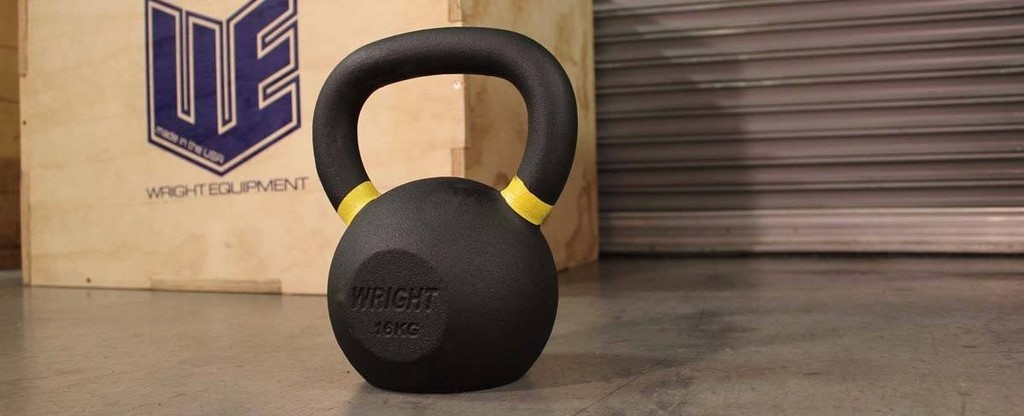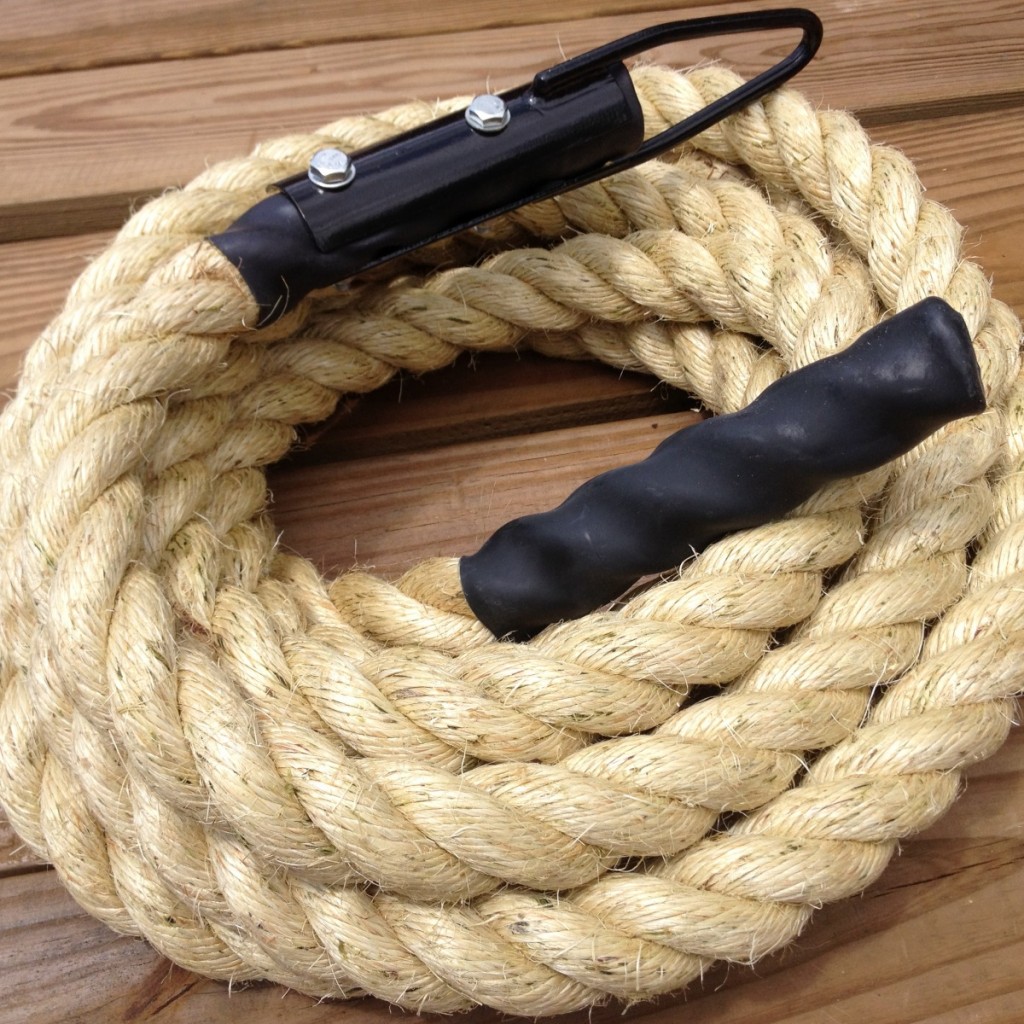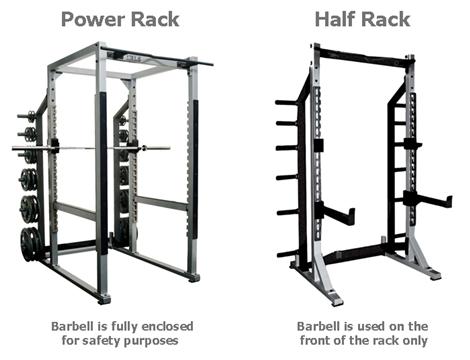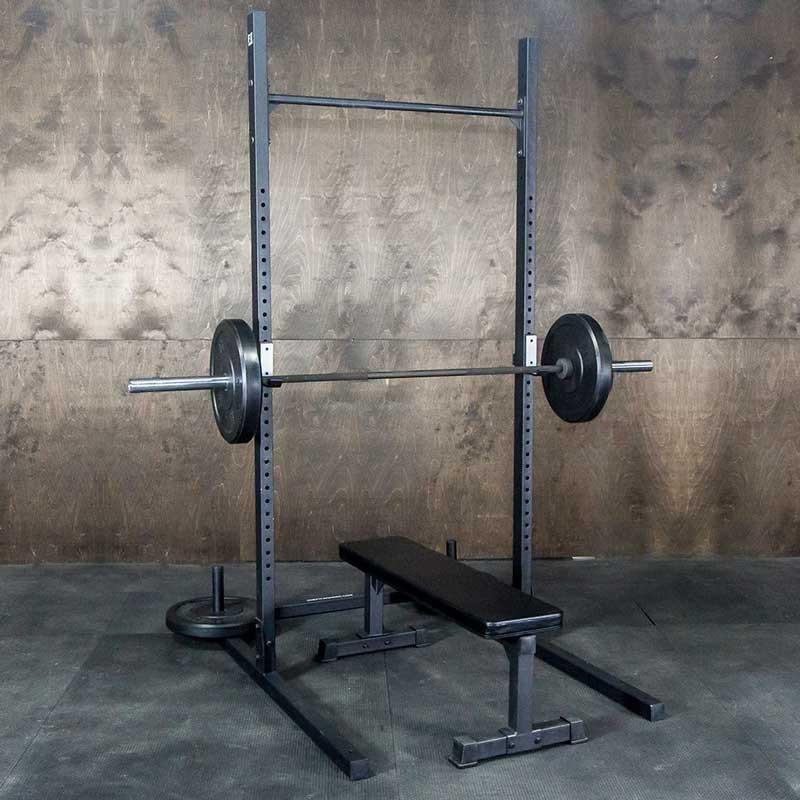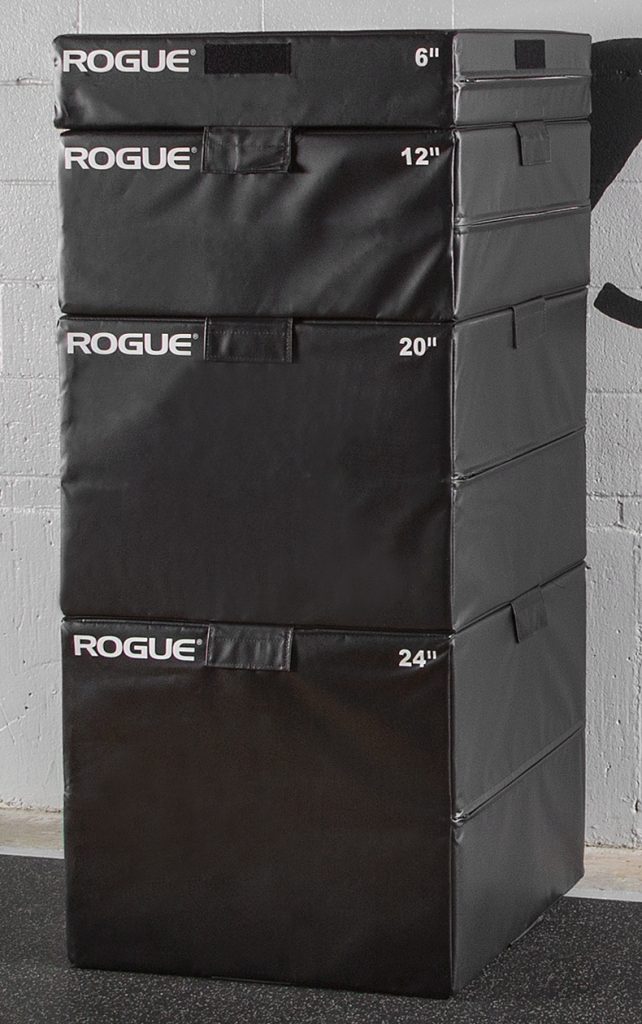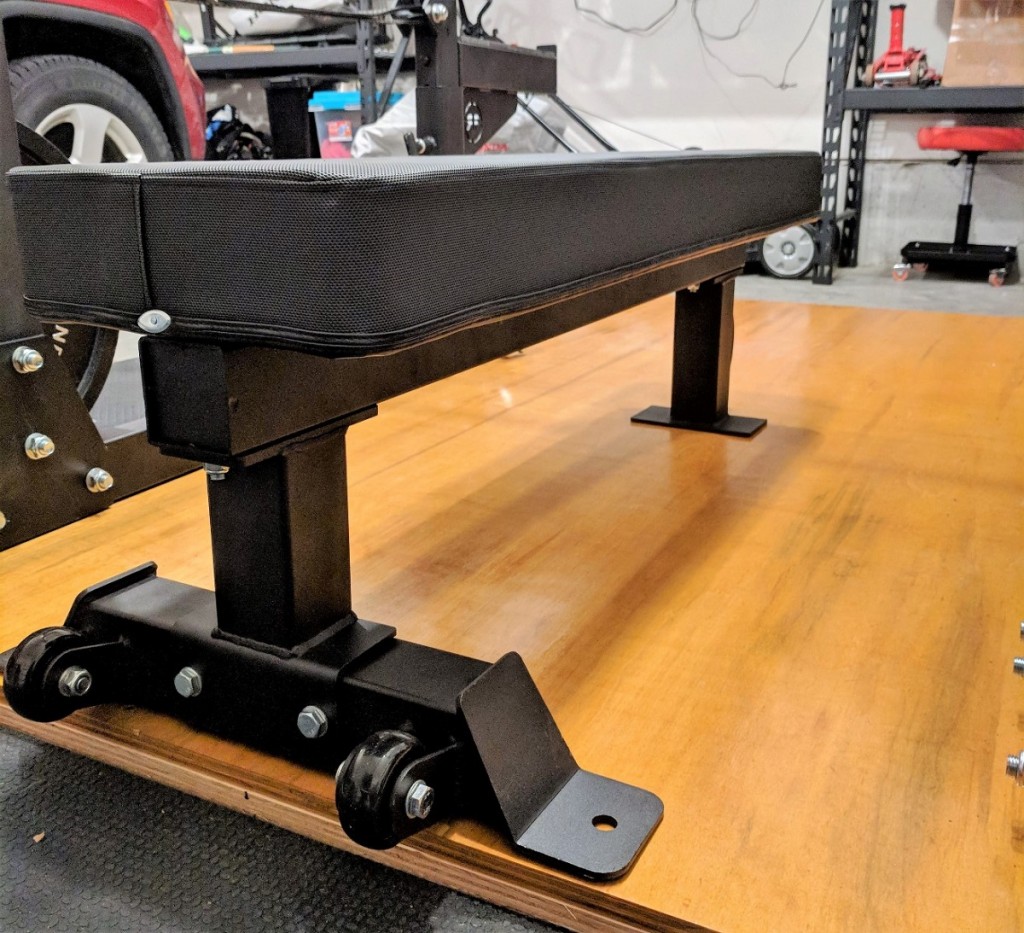You’ve landed on the best guide on how to start putting together a Crossfit gym in your garage!
Crossfit is known for its focus on conditioning, but you’ll notice that the top Crossfit athletes have enough muscle that it’s obvious they have put in a lot of weight training. See EliteFTS’s article on why strength training is as important as conditioning.
Table of Contents
The Quick Way: Starter Packages
Rogue has the most Crossfit packages, ranging from just a basic $600 barbell/bumper set to a $2700 setup including luxuries like a rower and hurdles.
The other suppliers of Crossfit equipment aren’t allowed to use the trademark Crossfit® to describe the products in a way that suggests they are official or endorsed packages by Crossfit HQ. In some cases they avoid using the word Crossfit anywhere on their website, on the conservative advice of their lawyers. The rest of these are meant for Crossfit workouts, but avoiding that trademarked word to avoid lawsuits.
The affiliate packages are meant for Crossfit affiliates, aka licensed Crossfit boxes, aka commercial Crossfit gyms. A little big for your needs. Ignore those.
For a better deal, Rep Fitness is considered high quality, right up there with Rogue, for a more competitive price on most items. You’ll get more out of their packages like this than the same spending with Rogue.
Picking and Choosing
Now that you can see what’s included in many packages, you have a frame of reference for picking and choosing what’s best for you to start with, and saving some money.
I’m going over these in a rough order of priority. Get the first stuff listed first, and move on down the list as you can.
You can go out of order. For example, it’s fine to get a kettlebell before a pull up bar. Whatever you feel like, or whatever your space or budget can handle, is fine and will open the door to at least a few more workout possibilities.
The reality is most people doing Crossfit at home do not have everything. They’re missing a plyo box, or they haven’t found a used rower to pick up yet. Or they have little more than a bar with bumpers, medicine ball, and kettlebell. Some athletes will have virtually everything and will never have to improvise based on available equipment. Who cares! Do what you can.
A Barbell Setup
The very first thing you’ll need is an olympic bar and weight plates.
With these, you can start doing so much. Snatches, cleans, power cleans, jerks, thrusters, deadlifts, overhead presses… That’s a lot of stuff. There’s a reason that barbell training is at the core of Crossfit. Plus, it’s used for plenty of accessory strength movements if you should feel the need.
The benchmark WODs you can do with this include:
- Grace (30 clean-and-jerks for time)
- Diane (handstand pushups and deadlifts)
- Isabel (30 snatches for time)
- Nancy (400m run, overhead squats)
Rogue’s bar and bumper package here will get you started.
A $200 bar will be sufficient for the foreseeable future for personal use.
If all you have at the moment is a cheap olympic bar, that will do for now. Whenever you can, spend about $300 to upgrade it to one that will be good for the foreseeable future.
The plates are ideally bumper plates, which are solid rubber and made to be dropped. A full set will include a pair of 45lb, 35lb, 25lb, 15lb and 10lb. Some sets do not include the 15lb,which is fine, and you can actually skip the 35lb because you can get to any weight totals with the others, and then just add more 45lb plates for heavier lifts as you need to.
Iron plates are ok too, if that’s all you have. Just be careful not to drop the bar with them. As you get more skilled with clean-and-jerks and snatches and you increase the weight to your limits, you will be forced to drop the weight from overhead or else struggle with lowering it to the ground. That’s what bumpers are made for.
Speaking of iron plates, you will want at least a few small ones, ie: “change plates”, 5lb and 2.5lb, for small increments.
Rings
Gymnastics rings are an easy next step, the biggest bang for your buck. They open the door to strict pull-ups, kipping pull-ups, dips, ring pushups, and muscle-ups.
The caveat is it’s best when you can mount them under a tall ceiling, or outside. With 8ft ceilings you’re not going to be doing much in the way of muscle-ups. You can do the rest, as well as ring pull-ups off your knees. But not kipping pull-ups.
Rings make a few more benchmark WODs possible. Note that the pullups are supposed to be done on a pull up bar, not rings, but you can make do with rings. It’s just harder.
- Angie (pullups, pushups, situps, squats)
- Barbara (same as Angie but different structure)
- Chelsea (pullups, pushups, squats)
- Cindy (same as Chelsea but different structure)
- Elizabeth (cleans, ring dips)
- Fran (thrusters, pullups)
- Mary (handstand pushups, one-legged squats, pullups)
What you want are 1.25″ diameter wooden rings. Plastic have the wrong texture and can be kind of flexey. The wood is perfect.
Rep Fitness has a fantastic deal for wooden rings. Nobody else seems to come close.
Jump Rope
These are all steel cable ropes nowadays, sometimes coated, but hey, that coating slows it down and we can’t have that.
Anyway, a jump rope is inexpensive. It is involved in zero benchmark WODs. Sorry for that. Still, people like them for warming up in particular. When you’re good at it, you can jump rope for Tabata workouts.
Kettlebells
A couple kettlebells are an excellent addition. They add these benchmark WODs to your workout:
- Helen (400m run, kettlebell swings, pullups)
- Eva (800m run, kettlebell swings, pullups)
When in doubt about the weight you need, start on the light side. Iron kettlebells are generally priced per pound, and some lighter ones are not going to set you back much. They’re valuable for learning movements like kettlebell snatches safely without banging up your forearms.
Kettlebells may be sold in either kilograms or pounds. Here’s some example starting weights for kettlebell swings and snatches.
- Women: 8kg / 15-20lb
- Athletic Women: 12-16kg / 25-30lb
- Inactive Men: 16kg / 30lb
- Athletic Men: 16-24kg / 35-55lb
- Strong Men: 30kg+ / 65lb+
I’d suggest getting two or three kettlebells. One 15lb kettlebell for learning form, and two more heavier ones according to the list above.
35 lbs isn’t much for a few reps, but after enough rounds of 30 reps it’s not trivial!
For any weight, what I recommend is a kettlebell with a 1.25″ handle. For reference, that’s a bit thicker than an olympic bar, and that’s what you want. Also, the good ones nowadays are all color-coded on the handles to make picking the right weight easy.
For kilogram kettlebells, see Rep Fitness’s high quality kettlebells.
For pound kettlebells, see the Rogue kettlebells, color coded with a seamless cast.
Additions For High Ceilings
Medicine Ball
The type used for the “wall ball” exercise is a padded 14″ medicine ball. It’s easy and forgiving to catch, bounces just enough as it hits high on the wall, and doesn’t bounce much off the floor.
The target height you want is 9ft, 9.5ft, or 10ft high. So you need at least a 10ft ceiling.
These are unlike traditional rubber medicine balls that are covered with rubber and have a big bounce. That’s not gonna work. They’ll smash your face up if you catch it badly, and they will bounce so hard off the wall that it will get out of control.
See the Troy VTX medicine balls, covered with a tough synthetic leather, nicely centered weight, and firm padding.
Pull Up Bar
Having a good pull up bar will make the WODs involving pullups easier than using rings. You’ll be on the same page as everyone else doing the WOD and can compare apples to apples.
Just like rings, you need some good ceiling height or be content with starting from your knees.
Kipping pull-ups, or butterfly pull-ups, which involve using momentum with your legs to do multiple reps, require a pull up bar that is stable enough, far away from the wall enough (if it’s a wall mounted model), and a smooth bar so you don’t rip up your hands.
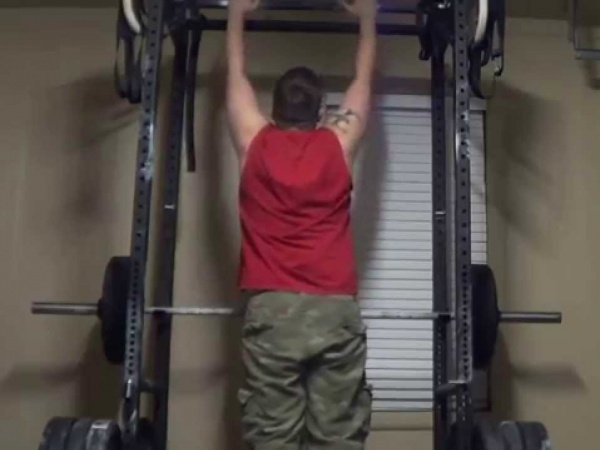
It probably isn’t worth getting a dedicated pull up bar if your ceiling is 8ft. You can wait until you have a power rack to use the pull up bar mounted on it, as shown above. However, it might not be suitable for kipping pull ups if it’s not a heavy duty rack or over 8ft tall.
Climbing Rope
Ideally this is 15-20ft. I’ve seen some mounted very short. With that, you just have to go up and down a lot. Any higher than 20ft and it starts getting perhaps too dangerous.
You should have some kind of mat underneath to keep your bones in one piece if you should slip.
Traditionally we relied on a manila rope. That will give you the best grip. Various types of synthetic poly ropes don’t shed, but your hands will slip!
Fringe Sport sells a great climbing rope made out of sisal instead of manila. Sisal is another natural fiber, giving you a great grip.
Squat Rack
Finally, the squat rack!
Generally, Crossfitters like a squat rack or “half rack”, rather than a power rack where the bar is enclosed on all sides. They do a variety of exercises in a workout, perhaps warming up with some strength exercises before the WOD, and moving the bar in and out of the rack quickly is handy. A half rack with safety bars, but open on the end so you can lift the bar on the front of your shoulders (as you’ll do frequently with cleans, front squats, and thrusters) and walk it out of the rack to the floor, and back to the rack.
A rack made more for the purposes of Crossfit is a squat rack with a pull up bar as above, that can be weighed down so it won’t tip from kipping pull ups.
Other than possibly giving you a pull up bar that you don’t have, a rack doesn’t do a whole lot for doing more benchmark WODs, but it does help you measure your Crossfit Total (1RPM back squat, 1RM deadlift and 1RM overhead press). Mainly a rack is invaluable for practicing not only front squats and back squats, but adding many strength exercises that you do off the rack, like bench presses, overhead presses, dips (with a dip attachment), rack pulls, and some other barbell exercises. You can only do so much off the floor. A rack gets you to use all the rest of your muscles.
Unless you can 100% safely drop a failed back squat, you don’t want to be doing them without a rack with safety spotter bars to catch a failed rep, or have human spotters on either side of the bar. Most half racks as above have spotter bars as an option.
Plyo Box
Box jumps are not involved in a lot of the benchmark WODs but are actually a part of a lot of other WODs and are one of the staples of any Crossfit gym. Box jumping is a good conditioning exercise.
See the plyo boxes article here for advice on what height box to get and wood vs steel or foam boxes. Foam boxes are the best but most expensive.
Rower
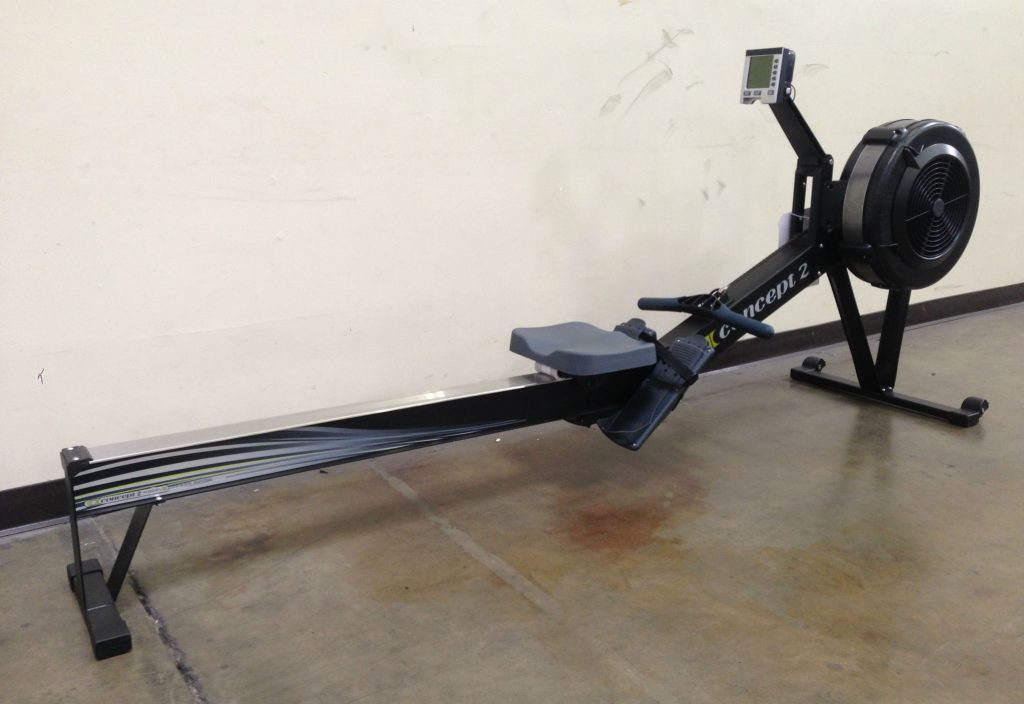
The standard is a Concept2 Model D. The Model E is fine too.
There are some other rowers that are good that we’ve gone over before. The issue is if you’re going to be comparing your times, everyone else is using a Concept2. The equipment doesn’t matter with things like barbells. 135 lbs is 135. A different rower will make a big difference. The resistance is not the same between A C2 and a water rower, and even between a C2 and another air rower.
Bench
A bench is one of the first things you’d get for a home gym oriented around bodybuilding or powerlifting. The bench press is a core lift of those disciplines.
Crossfit focuses on more dynamic movements. The bench press doesn’t have an obvious place in it. Still, it’s a good strength exercise to add to the overhead press. It opens up other exercises as well, but those are mainly dumbbell exercises.
An adjustable bench works, if you’re ok with dealing with the pad gap and the possibility that it isn’t as rock solid feeling as a regular flat utility bench. Here’s a discussion of the pros and cons of each. Or see our guides of the best flat benches and best flat/incline/decline benches.
There’s lots more you could get, but that will get you going!

